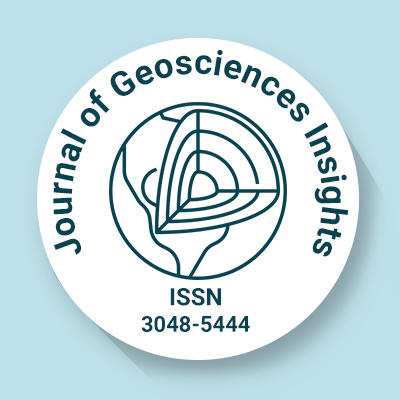
Journal of Geosciences Insights
OPEN ACCESS
ISSN: 3048-5444

OPEN ACCESS
ISSN: 3048-5444
Marine geosciences are the field of Earth science devoted to the examination of the sea floor, coastline, and related geological processes that shape them. It merges oceanography, geology, and geophysics to study submerged landscapes, seabed sediments, and their driving forces in the seafloor. Research scientists in the field investigate changes in oceans across time, oceans' interactions with the Earth's crust, and influence on the entire global climate system.
One of the main areas of marine geosciences is plate tectonics beneath the sea. The seafloor itself changes constantly through volcanic activity, earthquakes, and tectonic plate movement at a slow rate. Mid-ocean ridges, deep-sea trenches, and volcanoes beneath the ocean are some of the main structures created by the movements. From examining these structures, geoscientists are able to understand how the Earth’s crust changes and how new oceanic crust is formed.
Yet another significant component of marine geosciences is the investigation of marine sediments. Sediment layers on the sea floor hold useful records of the past climate conditions of Earth, oceanic circulation, and life in the sea. Through an examination of the deposits, scientists can recreate historical environmental conditions and learn about long-term climate variability. Such data are important in forecasting future climatic trends and evaluating human effects on marine ecosystems.
Coastal geology is also a significant aspect of this discipline. Coastlines are continuously sculpted by storms, tides, and waves, resulting in erosion and the creation of new landforms. Coastal processes are investigated by marine geoscientists to know about shoreline modifications, safeguard coastal communities from erosion, and administer resources such as sand and groundwater. Sea levels rising due to climate change make this study even more crucial to develop measures to safeguard coastal areas.
Marine geosciences also have an important role in the exploration of natural resources. The seafloor contains enormous reserves of oil, gas, and precious minerals. Researchers examine the geology under the sea in order to find these resources and make sure they are extracted in an environmentally sound manner. Marine geoscientists also examine gas hydrates, ice-like structures that trap methane, which might become a valuable source of energy in the future.
Knowledge of marine geoscience is also necessary for measuring and controlling natural hazards. Tsunamis, sea-floor landslides, and earthquakes can cause catastrophic damage to coastal populations. By understanding the geological processes responsible for triggering these phenomena, scientists can better design early warning systems and disaster mitigation.
This discipline also contributes to the comprehension of marine biodiversity. Seafloor mapping and analysis of sediments give an idea about deep-sea ecosystems and habitats, which harbor rare and frequently unexplored species. Conservation of these ecosystems is critical as human endeavors like deep-sea mining and fishing keep on increasing.
In short, marine geosciences assist us in comprehending the changing interplay between the ocean and the Earth’s geology. It is essential for the study of climate change, coastal protection, resource discoveries, and the Earth’s past and future.